Remembering Hank Williams, born on this day in 1923
Come join us now, and enjoy playing your beloved music and browse through great scores of every level and styles!
Can’t find the songbook you’re looking for? Please, email us at: sheetmusiclibrarypdf@gmail.com We’d like to help you!
Table of Contents
Remembering Hank Williams, born on this day in 1923 (1923-1953)
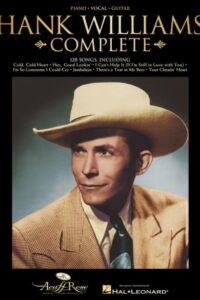
Hank Williams Greatest Hits Full Album 2021 Hank Williams Songs Collection
Best Sheet Music download from our Library.

Please, subscribe to our Library.
If you are already a subscriber, please, check our NEW SCORES’ page every month for new sheet music. THANK YOU!

Browse in the Library:
Or browse in the categories menus & download the Library Catalog PDF:
The Lonesome Whippoorwill: An Exhaustive Examination of Hank Williams
On September 17, 1923, in a humble community known as Mount Olive West in Butler County, Alabama, Hiram King Williams was born. The world would later know him as Hank Williams, a name that would become synonymous with the very soul of country music. His life was a meteorite—a brilliant, fiery arc across the cultural sky that burned out far too soon, leaving behind a legacy so profound and enduring that it fundamentally reshaped the landscape of American music. More than just a singer-songwriter, Hank Williams was a poet of the heart’s deepest sorrows and simplest joys, a raw nerve of emotion channeled through a haunting voice and a deceptively simple musical style. This article delves into the biography, musical genius, and immortal legacy of the man they called the “Hillbilly Shakespeare.”
Biography: A Life of Pain and Poetry
Hank’s life was marked by struggle from the very beginning. His father, Elonzo “Lon” Williams, was a veteran of World War I who suffered from severe health problems, including shell shock and a brain aneurysm, which led to his prolonged absence in veterans’ hospitals for much of Hank’s childhood. This left his mother, Lillie Williams, to support the family. A formidable and ambitious woman, she ran a boarding house and eventually moved the family to Montgomery, Alabama, in 1937.
It was here that Hank’s musical journey truly began. His first guitar was bought for him by his mother, and his earliest influences came from a diverse set of sources: the soulful hymns of the Baptist church, the street-singing of a local African American bluesman, Rufus “Tee-Tot” Payne, and the sounds of the Grand Ole Opry drifting through the radio waves. Payne, in particular, was a crucial figure, giving Hank informal lessons in exchange for meals or money. From him, Hank absorbed the raw, emotional delivery and rhythmic intricacies of the blues, a foundation that would forever underpin his own music.
By his mid-teens, Hank had already begun performing on the street and formed his first band, Hank Williams and his Drifting Cowboys. Their early gigs were in rowdy bars and honky-tonks, environments that demanded a loud, driving sound and forced Hank to develop a commanding stage presence. It was also during this time that he began developing the chronic back pain that would plague him for the rest of his life, a condition likely caused by spina bifida occulta. This pain led to an early dependence on alcohol and painkillers, setting a tragic pattern for his future.
His big break came in 1946 when, after years of relentless touring and local radio success, he signed with the newly formed MGM Records. His first release, “Move It On Over,” was a massive hit, a rockabilly-esque number that showcased his energetic style. But it was in 1949 that he achieved superstardom. He joined the cast of the Louisiana Hayride, a renowned radio show that was a stepping stone to Nashville’s Grand Ole Opry. His second release for MGM, “Lovesick Blues,” an old Tin Pan Alley song he completely reinvented, became a national phenomenon. Its success was so undeniable that the conservative Opry, which had previously been hesitant about his rough honky-tonk image, had no choice but to invite him to join. His debut on June 11, 1949, was legendary; he performed “Lovesick Blues” for a record-breaking six encores.
The years from 1949 to 1951 were the peak of his career. He churned out an unprecedented string of hits: “I’m So Lonesome I Could Cry,” “Your Cheatin’ Heart,” “Cold, Cold Heart,” “Hey, Good Lookin’,” and “Jambalaya (On the Bayou),” among many others. He married his manager, Fred Rose’s, secretary, Billie Jean Jones, in a lavish public ceremony.
But behind the success, his personal demons were consuming him. His alcoholism became debilitating, leading to missed shows and unreliable behavior. The Opry finally fired him in 1952. His marriage to Billie Jean was crumbling, and his health was in a rapid decline. On January 1, 1953, at the age of 29, Hank Williams was being driven to a concert in Canton, Ohio, by a hired driver. Somewhere in the hills of West Virginia, the driver checked on his passenger and found Hank Williams lifeless. The official cause of death was listed as “acute ventricular dilation,” a heart failure likely brought on by a combination of alcohol, morphine, and chloral hydrate.
His funeral in Montgomery drew over 20,000 mourners, a testament to the deep connection he had forged with the American public. In death, as in life, he was a symbol of both immense talent and profound tragedy.
Music Style: The Blueprint of Honky-Tonk
Hank Williams did not invent honky-tonk music, but he perfected it and became its most iconic figure. His style was a direct reflection of his life and influences:
- Lyrical Honesty and Simplicity: Williams’s genius lay in his ability to articulate complex, universal emotions in straightforward, relatable language. He sang of heartache, loneliness, love, and faith without pretense or artifice. Lines like “The silence of a falling star / Lights up a purple sky” (“I’m So Lonesome I Could Cry”) are pure, evocative poetry. He gave a voice to the post-war working class, singing about their struggles in bars, broken homes, and lonely highways.
- Vocal Delivery: His voice was an instrument of unparalleled emotion. It was a high, lonesome baritone that could convey aching vulnerability (“I’m So Lonesome I Could Cry”) or playful swagger (“Hey, Good Lookin’”). He mastered the use of microtonal slides and blue notes—inherited from the blues—to squeeze every ounce of feeling from a phrase. His trademark yodel, though used sparingly, was a powerful emotional release.
- Instrumentation: The sound of the Drifting Cowboys was the archetypal honky-tonk setup: a solid, walking acoustic bass, clean electric guitar rhythms, a crying steel guitar (played masterfully by Don Helms), and a fiddle providing counter-melodies and fills. This created a clean, spacious, and deeply resonant backdrop for Hank’s voice and lyrics.
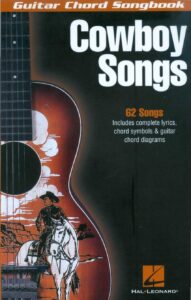
Improvisational Licks, Chord Progressions, and Music Harmony
While Hank Williams’s songs are often structurally simple, their emotional power is derived from sophisticated musical nuances.
- Chord Progressions: Williams worked primarily within the standard confines of country music, using the classic I-IV-V progression as his foundation. However, he used it with masterful effectiveness. He often employed:
- The “Heartbreak” progression (I – vi – IV – V): Used famously in “Your Cheatin’ Heart,” this progression adds a touch of melancholy with the minor sixth chord (vi).
- Chromatic Bass Lines: In a song like “I’m So Lonesome I Could Cry,” the chord progression is elevated by a descending chromatic bass line (e.g., moving from a C chord to a C/B to a C/Bb to an F), creating a profound sense of longing and descent.
- Blues Influence: Many of his songs, like “Move It On Over,” are built on a standard 12-bar blues structure, filtered through a country lens.
- Improvisational Licks (The Don Helms Factor): The most distinctive improvisational elements in Hank’s music came from the steel guitar of Don Helms. Helms didn’t play complex, flashy solos; instead, he played signature licks and fills that were melodic hooks in themselves. His style was defined by:
- Crying Glissandos: Long, mournful slides into specific notes that directly mirrored the emotion in Hank’s voice.
- Answer Phrases: Helms’s steel would often play a short, melodic phrase in the space after Hank sang a line, acting as a musical echo or response. This call-and-response is a core element of the blues and gospel music Hank grew up with.
- The “High Note”: Helms was known for hitting and sustaining a high, ringing note (often the root or fifth of the chord) that would cut through the mix, creating an unforgettable, lonesome atmosphere. This is instantly recognizable in the intro to “Your Cheatin’ Heart.”
These elements were not improvised in a jazz sense but were carefully crafted and rehearsed motifs that became an integral, non-improvisable part of the songs themselves.
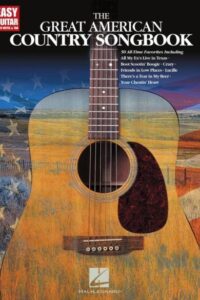
Cooperation with Other Artists
Hank Williams’s most important professional relationship was with Fred Rose, his publisher, producer, and manager at Acuff-Rose. Rose was a seasoned music industry professional who recognized Hank’s raw talent. He acted as a crucial editor and polisher, helping Hank refine his song ideas, ensuring they were commercially viable, and protecting his interests in Nashville. Their partnership was the engine behind his incredible output.
Musically, his most vital collaborator was Don Helms. The sound of Hank’s steel guitar is inseparable from Helms’s playing. Other members of the Drifting Cowboys, like fiddler Jerry Rivers and guitarist Sammy Pruett, were essential in crafting the band’s tight, signature sound.
While direct collaborations on record were rare for the era, his songs became vehicles for countless other artists. The most famous example is Tony Bennett, whose 1951 recording of “Cold, Cold Heart” became a massive pop hit, introducing Williams’s songwriting to a vast new audience and breaking down barriers between pop and country music. This “crosscover” phenomenon happened repeatedly, with artists like Jo Stafford, Frankie Laine, and Rosemary Clooney recording his songs.

Influences
Hank Williams was a product of the American South, and his music was a melting pot of its sounds:
- Blues: His mentor, Tee-Tot Payne, was his primary conduit for the blues. The lyrical themes of hardship and the musical phrasing are deeply rooted in the blues tradition.
- Gospel and Sacred Harp Singing: Raised in the church, the mournful, full-throated harmonies of shape-note singing and the fervor of evangelical hymns permeate his music, especially his later recordings as “Luke the Drifter.”
- Western Swing: The danceable, rhythm-driven sound of Bob Wills and His Texas Playboys influenced the upbeat, swinging feel of songs like “Settin’ the Woods on Fire.”
- Traditional Country and Folk: The storytelling of artists like Roy Acuff and the Carter Family provided a foundational model for the country music genre he would soon dominate.
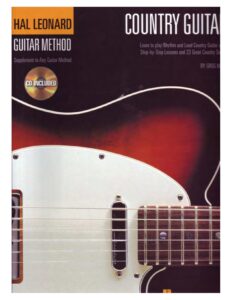
Legacy: The Hillbilly Shakespeare’s Enduring Reign
Hank Williams’s legacy is immeasurable. He is quite simply one of the most important figures in 20th-century American music.
- Songwriting: He established the model for the modern country songwriter. His songs have been covered by artists across every genre, from Ray Charles and Louis Armstrong to The Beatles, Norah Jones, and Metallica. “Your Cheatin’ Heart,” “Hey, Good Lookin’,” and “I’m So Lonesome I Could Cry” are standards in the Great American Songbook.
- Persona: He created the archetype of the tormented country music outlaw, a figure who lived the pain he sang about. This persona would be echoed in artists from Johnny Cash to Waylon Jennings to Townes Van Zandt.
- Rock and Roll: His driving rhythms, direct lyrics, and rebel attitude were a direct precursor to rock and roll. Elvis Presley, Buddy Holly, and Jerry Lee Lewis all cited him as a major influence. “Move It On Over” is essentially a rock and roll song recorded a decade before its time.
- Awards and Honors: He was part of the inaugural class inducted into the Country Music Hall of Fame (1961). He was awarded a Pulitzer Prize Special Citation in 2010 for his “craftsmanship as a songwriter who expressed universal feelings with poignant simplicity and played a pivotal role in transforming country music into a major musical and cultural force.” His recording of “Lovesick Blues” was inducted into the Grammy Hall of Fame.
Works: The Luke the Drifter Recordings
A unique part of Hank’s catalog is his series of recordings under the alias “Luke the Drifter.” Used for his recitations and moralistic tales—songs like “Too Many Parties and Too Many Pals,” “The Funeral,” and “Pictures from Life’s Other Side”—the alias allowed Fred Rose to release these spoken-word records without confusing audiences expecting Hank’s typical honky-tonk fare. These recordings reveal a different side of his artistry: the moral philosopher and storyteller, deeply influenced by the gospel tradition.
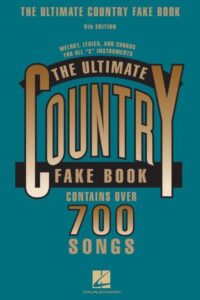
Filmography
Hank Williams’s film career was brief and unremarkable, existing primarily as a vehicle to promote his music. The two films he made were:
- “Look Magazine’s Look-Out” (1948) – A short film.
- “Hank Williams Sings” (1949) – A short film.
- “Honky Tonk” (1950) – A short film.
- “The Hank Williams Story” (1952) – A short film.
His life, however, has been the subject of several biopics, including Your Cheatin’ Heart (1964) starring George Hamilton and I Saw the Light (2015) starring Tom Hiddleston.
Discography (Key Releases)
Hank’s recording career was concentrated between 1947 and 1952. His most essential works are found in the countless compilations that followed. Key original releases and posthumous collections include:
- Hank Williams Sings (1951)
- Moanin’ the Blues (1952)
- The Memorial Album (1953)
- Hank Williams as Luke the Drifter (1954)
- 40 Greatest Hits (1978) – This remains the definitive single-disc collection.
- The Complete Hank Williams (1998) – A 10-CD box set containing every known recording.
Most Known Compositions and Performances
His most iconic songs are woven into the fabric of American culture:
- “Your Cheatin’ Heart” – Perhaps the ultimate country heartbreak song.
- “I’m So Lonesome I Could Cry” – A masterpiece of lyrical melancholy.
- “Hey, Good Lookin’” – An upbeat, infectious standard.
- “Jambalaya (On the Bayou)” – A celebration of Cajun culture.
- “Cold, Cold Heart” – The song that bridged the country and pop worlds.
- “Lovesick Blues” – The song that made him a star, famous for its yodeling refrain.
- “Move It On Over” – A proto-rockabilly anthem.
- “I Can’t Help It (If I’m Still In Love With You)” – A beautifully sad waltz.
- “Lost Highway” – A defining anthem of the wandering outlaw.
- “There’s a Tear in My Beer” – A song later completed digitally by his son, Hank Williams Jr.
Hank Williams lived only 29 years, but in that short time, he etched his name permanently into the heart of America. He was a flawed, troubled man whose personal suffering became the fuel for his art. He took the raw materials of the rural South—the blues, gospel, and folk traditions—and refined them into a powerful new form of expression that spoke to millions. He was the Hillbilly Shakespeare, a poet of the common man whose simple, honest songs about complex emotions transcended their genre to become a permanent part of the world’s musical vocabulary. The lonesome whippoorwill’s song he so famously described continues to echo, as powerful and poignant today as it was over seventy years ago.
Browse in the Library:
Or browse in the categories menus & download the Library Catalog PDF:
